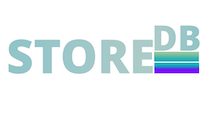
| STUDYID | STOREDB:STUDY1091 |
|---|---|
| CREATEDON | 2017-05-19 13:52:55 |
| MODIFIEDON | 2017-05-19 14:00:20 |
| UPLOADER | Paul Schofield |
| DOI | DOI:10.20348/STOREDB/1091 |
| STUDY NAME | ||
|---|---|---|
| 3-generation Exposure Study | ||
| STUDY STATUS | ||
| Published: Open access to everyone | ||
| DATA SHARING POLICY | ||
| Other (specify in 'description') | ||
| COUNTRY | ||
| Kazakhstan | ||
| PRINCIPAL INVESTIGATOR | ||
| Prof. Kazbek N. Apsalikov | ||
| SPECIES | ||
| Homo sapiens | ||
| SIZE OF COHORT | ||
| 1000-9999 | ||
| OUTCOME | ||
| Transgenerational effects | ||
| EXPOSURE CONTEXT | ||
| Environmental | ||
| INTERNAL OR EXTERNAL EXPOSURE | ||
| External | ||
| TYPE OF EXTERNAL EXPOSURE | ||
| mixed | ||
| TYPE OF INTERNAL EXPOSURE | ||
| mixed | ||
| RADIONUCLIDE | ||
| multiple | ||
| DOSE RATE | ||
| Mixed | ||
| BIOLOGICAL SAMPLE AVAILABLE | ||
| Yes | ||
| STUDY DESCRIPTION | ||
| The Semipalatinsk nuclear test site (STS) is located approximately 150 km west of the city of Semipalatinsk (now called Semey), and was a major site for nuclear weapons testing by the former Soviet Union. It was here that the Soviet Union conducted their first nuclear test on 29 August 1949. Later, 465 nuclear explosions were carried out between 1949 and 1989, including 118 atmospheric events (88 air events and 30 surface events) from 1949-1962. The last event was conducted at the STS on 19 October 1989. The total yield of atmospheric events conducted at STS is reported to be 6.58 megatons of TNT equivalent, which corresponds to approximately 66% of the total es mated Soviet bomb yield.
The Research Institute for Radiation Medicine and Ecology in Semey, Kazakhstan, runs a registry of the population living around STS. It is the successor of the 1957-founded medical ins tu on Dispensary No. 4 of the USSR Ministry of Health whose activities included studies on the health effects of radiation exposure to those residing adjacent to the STS. In 2014, the Institute started collecting information on 8,400 persons from the Register, setting up the basis for a three -generation study. The following data are abstracted: a) registration data: individuals ID, sex, nationality, date and place of birth; b) medical information (where applicable): diagnoses names and dates, congenital malformations, cause of death; c) dosimetry data: radiation route, radiation dose (based on doses assigned by Kazakh legislation, which can differ from the doses estimated by other methods); d) information on lifestyle factors: smoking, alcohol; availability of biological samples: blood, DNA, tumour and normal tissues. This information is included in the STORE database (AIR2, #3). Of the 8,400 individuals registered, 2,380 were affected by the test, 2,937 belong to the F1 generation and 3,083 to the F2 genera on. Overall, the following information is available: 11,327 medical diagnosis for incident cases, 1,199 causes of death, 1,937 smoking information, 2,982 drinking information, 215 blood samples, 79 DNA, 14 cancer and 14 healthy tissue samples, and for 145 information on chromosomal aberrations. Data are available through STORE by agreement with the data curators. Reference: Susanne Bauer, Boris Gusev, Tatyana Belikhina, Timur Moldagaliev, Kazbek Apsalikov, The Legacies of Soviet Nuclear Testing in Kazakhstan, Radioactivity in the Environment, Volume 19, 2013, Pages 241-258, ISSN 1569-4860, https://doi.org/10.101/B978-0-08-045015-5.00014-9 | ||
| DATASET NAME | ||
|---|---|---|
| 3-generation study set data | ||
| DOI | DOI:10.20348/STOREDB/1091/1131 | |
| LINK TO FILE | ||
| http://storedb.org/store_v3/study.jsp?studyId=1037 | ||
| DATASET DESCRIPTION | ||
| STOREDB:STUDY1037 | ||